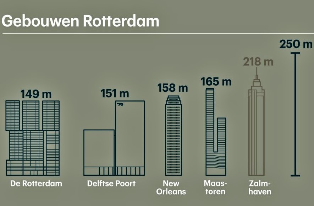 Rotterdam gaat nog verder de hoogte in. In de binnenstad van Rotterdam kunnen de komende jaren gebouwen rijzen tot 250 meter (nu nog 200 meter). Bovendien komen er drie nieuwe hoogbouwlocaties bij: Alexanderpolder, Feyenoord City en het gebied rond het winkelcentrum Zuidplein. Sociale veiligheid, leefbaarheid en levendigheid zijn daarbij belangrijke voorwaarden. Dit staat in de Hoogbouwvisie 2019 die het college op 16 oktober presenteerde. “Rotterdam heeft meer woonruimte nodig. Tot 2040 komen er 50.000 nieuwe woningen bij. Dat betekent dat ook de prachtige skyline van Rotterdam de komende jaren mee gaat groeien met de stad”, zegt wethouder Bas Kurvers (Bouwen en Wonen).
Rotterdam gaat nog verder de hoogte in. In de binnenstad van Rotterdam kunnen de komende jaren gebouwen rijzen tot 250 meter (nu nog 200 meter). Bovendien komen er drie nieuwe hoogbouwlocaties bij: Alexanderpolder, Feyenoord City en het gebied rond het winkelcentrum Zuidplein. Sociale veiligheid, leefbaarheid en levendigheid zijn daarbij belangrijke voorwaarden. Dit staat in de Hoogbouwvisie 2019 die het college op 16 oktober presenteerde. “Rotterdam heeft meer woonruimte nodig. Tot 2040 komen er 50.000 nieuwe woningen bij. Dat betekent dat ook de prachtige skyline van Rotterdam de komende jaren mee gaat groeien met de stad”, zegt wethouder Bas Kurvers (Bouwen en Wonen).
De laatste hoogbouwvisie van de gemeente Rotterdam stamt alweer uit 2011 en was toe aan een herziening. Voorheen was het alleen mogelijk om hoogbouw te realiseren in het centrum en op de Kop van Zuid, daarbuiten is maximaal 70 meter toegestaan. De maximale streefhoogte was in 2011 nog 200 meter, maar die grens is alweer achterhaald.
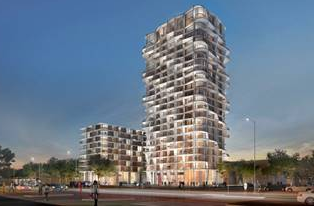 Met de ondertekening van het contract tussen opdrachtgever Kroonenberg Groep en J.P. van Eesteren kan de bouw van de twee wooncomplexen op de hoek van de Buitenveldertselaan en de Van Nijenrodeweg in Amsterdam officieel van start. Ton Vaags, directievoorzitter van J.P. van Eesteren, is trots op de nieuwe klus: “Werken voor een gerenommeerde opdrachtgever aan zo’n architectonisch hoogstandje op deze locatie in Amsterdam is geweldig. Maar vooral ook een uitdaging om in een dichtbevolkt gebied een woontoren van 75 meter en een 35 meter hoog appartementencomplex toe te voegen. Een technisch complexe en logistiek interessante operatie.”
Met de ondertekening van het contract tussen opdrachtgever Kroonenberg Groep en J.P. van Eesteren kan de bouw van de twee wooncomplexen op de hoek van de Buitenveldertselaan en de Van Nijenrodeweg in Amsterdam officieel van start. Ton Vaags, directievoorzitter van J.P. van Eesteren, is trots op de nieuwe klus: “Werken voor een gerenommeerde opdrachtgever aan zo’n architectonisch hoogstandje op deze locatie in Amsterdam is geweldig. Maar vooral ook een uitdaging om in een dichtbevolkt gebied een woontoren van 75 meter en een 35 meter hoog appartementencomplex toe te voegen. Een technisch complexe en logistiek interessante operatie.”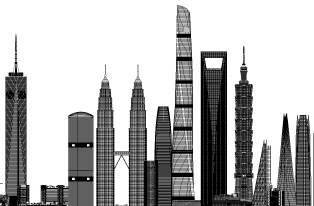 The skyscraper has a history extending back more than 120 years, but it entered a new phase of innovation and acceleration in the late 1960s.
The skyscraper has a history extending back more than 120 years, but it entered a new phase of innovation and acceleration in the late 1960s.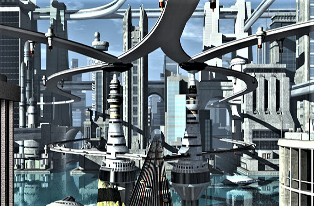 De hoogbouwambities van verschillende Nederlandse steden reiken tot in de wolken. Zo wordt in Utrecht ‘eindelijk’ hoger dan de Domtoren (113 meter) gebouwd en is in Den Haag en Eindhoven ruimte voor meerdere torens die de skyline van die steden zal doen veranderen. Het is binnenstedelijke verdichting in de overtreffende trap. Steeds nadrukkelijker dringt de vraag zich op hoe we die sterk verdichte stadsdelen, en in het bijzonder die hoogbouw, bereikbaar houden >>>
De hoogbouwambities van verschillende Nederlandse steden reiken tot in de wolken. Zo wordt in Utrecht ‘eindelijk’ hoger dan de Domtoren (113 meter) gebouwd en is in Den Haag en Eindhoven ruimte voor meerdere torens die de skyline van die steden zal doen veranderen. Het is binnenstedelijke verdichting in de overtreffende trap. Steeds nadrukkelijker dringt de vraag zich op hoe we die sterk verdichte stadsdelen, en in het bijzonder die hoogbouw, bereikbaar houden >>> 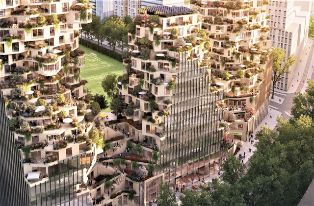 Klaas de Boer deinst er ook niet voor terug zijn ‘eigen’ Zuidas te noemen als voorbeeld van hoe je hoogbouw stedenbouwkundig goed inpast. ‘Op de Zuidas hebben we een schaakpatroon toegepast waarin hoogbouw is afgewisseld met laagbouw voor goed uitzicht, en bezonning en beschaduwing op een goed wijze tegen elkaar zijn afgewogen.’
Klaas de Boer deinst er ook niet voor terug zijn ‘eigen’ Zuidas te noemen als voorbeeld van hoe je hoogbouw stedenbouwkundig goed inpast. ‘Op de Zuidas hebben we een schaakpatroon toegepast waarin hoogbouw is afgewisseld met laagbouw voor goed uitzicht, en bezonning en beschaduwing op een goed wijze tegen elkaar zijn afgewogen.’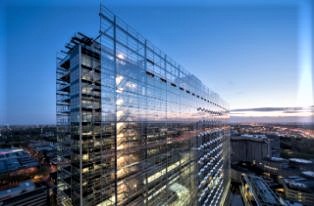 The Council on Tall Buildings and Urban Habitat celebrated a crop of new buildings and urban developments around the world at its 17th Annual CTBUH Awards Program in Shenzhen. The CTBUH Awards Jury has now announced the winners across 20 award categories, including the top-billed “Best Tall Building Worldwide” distinction, which was given to
The Council on Tall Buildings and Urban Habitat celebrated a crop of new buildings and urban developments around the world at its 17th Annual CTBUH Awards Program in Shenzhen. The CTBUH Awards Jury has now announced the winners across 20 award categories, including the top-billed “Best Tall Building Worldwide” distinction, which was given to 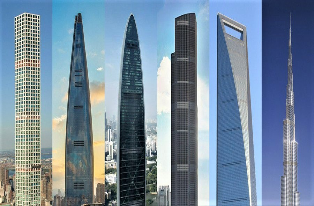 Humanity has become obsessed with breaking its limits, creating new records only to break them again and again. In fact, our cities’ skylines have always been defined by those in power during every period in history. At one point churches left their mark, followed by public institutions and in the last few decades, it’s commercial skyscrapers that continue to stretch taller and taller.
Humanity has become obsessed with breaking its limits, creating new records only to break them again and again. In fact, our cities’ skylines have always been defined by those in power during every period in history. At one point churches left their mark, followed by public institutions and in the last few decades, it’s commercial skyscrapers that continue to stretch taller and taller.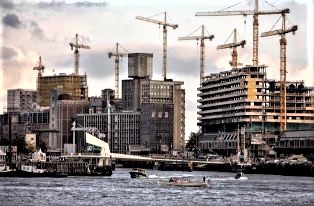 De Gemeente Rotterdam maakt concrete afspraken met projectontwikkelaars en corporaties om de bouw van huizen te versnellen. Bouwplannen worden vooraf nauwkeurig onderzocht om zo snel en efficiënt mogelijk alle gemeentelijke procedures te doorlopen. Zodra plannen rond zijn, komen er geen wijzigingen meer die tot vertraging kunnen leiden. Ontwikkelaars en bouwers met een goed plan, komen sneller in aanmerking om te ontwikkelen als hiervoor gemeentegrond nodig is. De gemeente wil hiervoor het gronduitgiftebeleid aanpassen.
De Gemeente Rotterdam maakt concrete afspraken met projectontwikkelaars en corporaties om de bouw van huizen te versnellen. Bouwplannen worden vooraf nauwkeurig onderzocht om zo snel en efficiënt mogelijk alle gemeentelijke procedures te doorlopen. Zodra plannen rond zijn, komen er geen wijzigingen meer die tot vertraging kunnen leiden. Ontwikkelaars en bouwers met een goed plan, komen sneller in aanmerking om te ontwikkelen als hiervoor gemeentegrond nodig is. De gemeente wil hiervoor het gronduitgiftebeleid aanpassen.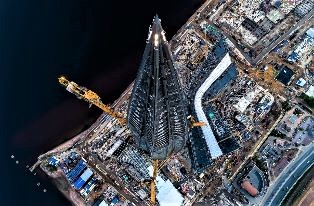 Either as singular outcroppings or as part of a bustling center,
Either as singular outcroppings or as part of a bustling center, 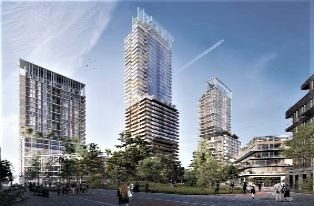 Op de hoogbouwkavel in Leidsche Rijn Centrum Noord komt het plan
Op de hoogbouwkavel in Leidsche Rijn Centrum Noord komt het plan